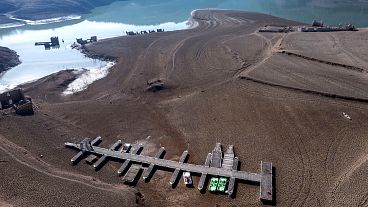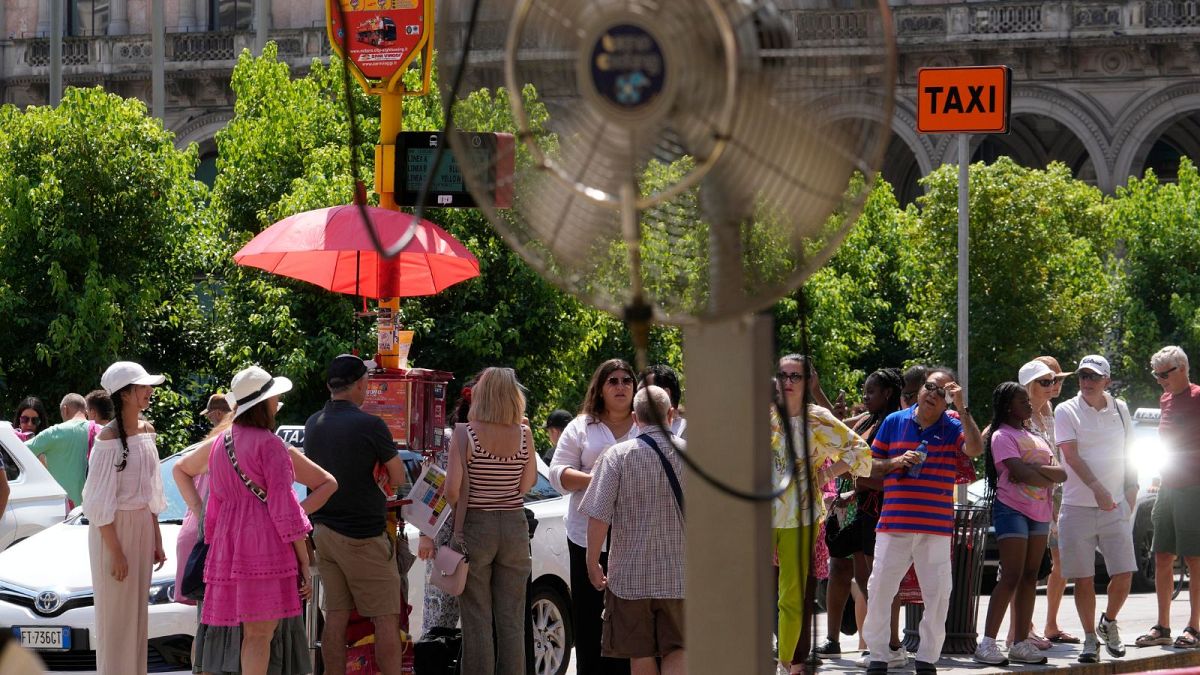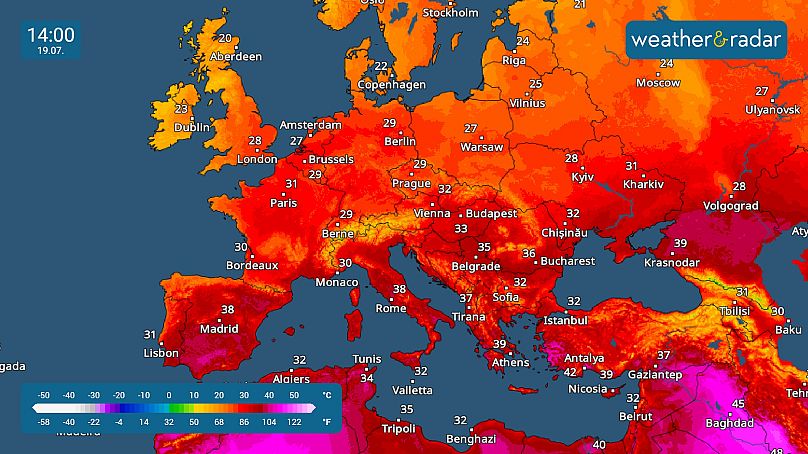‘Climate change is making these hot spells worse’, experts warn.
After several days of ‘hellishly hot’ temperatures across southern Europe, people are looking for some respite from July’s heatwaves.
There’s little relief to be had in the very short term, with peaks of up to 43 degrees Celsius forecasted for parts of Italy and Greece today (18 July).
The extreme heat that has afflicted many southern and eastern countries this month is partly driven by a wave of hot air from north Africa.
Multiple people are reported to have died in Italy, and extreme heat-death warnings continue to be issued for countries from Portugal to Romania and Cyprus.
But the lethal heat is finally expected to abate for many places over the weekend and into next week. Here’s what the experts are predicting.
Why has southern Europe’s heatwave lasted so long?
“It all has to do with a fairly persistent large-scale weather pattern,” explains Lars Lowinski, a meteorologist at the Weather & Radar weather service.
“Southern and eastern parts of Europe have been under what we call a high-pressure ridge [also known as a heat dome], basically a large area of high pressure with plenty of very warm air that does not move much.”
By contrast, low pressure areas with cooler and more changeable conditions have been dominating the picture closer to the Atlantic. Northern Europe has been spared the scorching heat due to the jet stream: a band of fast-moving air in the upper levels of the atmosphere which separates these two weather regimes.
Where the two air masses meet - from southern France and the Alps up to the Baltic States - there have been several rounds of heavy rain and severe thunderstorms with large hail and high winds, Lowinski adds.
When are southern Europe’s heatwaves forecast to end?
Temperatures have been around 6-12C above average values for the time of year, fuelling wildfires and requiring record power consumption. Some areas have enacted special heat plans, including opening up air conditioned spaces and banning outdoor work to protect people.
The unusually hot weather is set to continue for a couple more days, according to Weather & Radar, with temperatures again soaring to 35-40C in places such as Serbia, Italy, Albania, Greece, Romania and Bulgaria.
But the good news is that the worst of this extremely hot spell is now behind us, says Lowinski, with the trend for Sunday and into next week indicating a gradual decline towards more seasonable conditions.
“This incursion of cooler, fresher air early next week could also set off some strong thunderstorms in places, particularly across the Balkans,” he says.
Italian weather news site IlMeteo is also warning of this eventuality, with thunderstorms predicted for many areas of the country on Sunday.
Despite the heatwave dipping out, temperatures are still set to stay high for the rest of the month. AccuWeather forecasts temperatures in the low to mid 30s for many places in southern Europe until 25 July.
How many more extreme heatwaves are expected across Europe this summer?
Given the large-scale weather pattern behind it, forecasters saw this current heatwave coming well in advance, with signs as early as late June.
But forecasting heatwaves - particularly their intensity and duration - remains a challenge, and the experts aren’t sure what’s in store for the rest of the summer.
AccuWeather’s senior meterologist Tyler Roys says we’re unlikely to see a reprise of this week’s widespread heat from Italy to Ukraine, however.
“The chance for localised extreme heat (35C+) to occur for a day or two at a time in the typical locations is more likely to happen, especially in the middle of August,” he adds. “It does look like that the second half of August temperatures getting back to the 30-35C for a period of time has a possibility of occurring.”
For Lowinski, the bigger challenge is communicating the risks that come with prolonged heatwaves.
“The extreme, and sometimes record-breaking, temperatures we have seen over the past several days are also a clear indicator that climate change is making these hot spells worse,” he says.
“Heatwaves now tend to be more intense, and that includes night-time temperatures as well. Conveying that risk and how to prepare people, animals and infrastructure (think air-conditioning and extra strain on power grids, for example) is increasingly important.”















